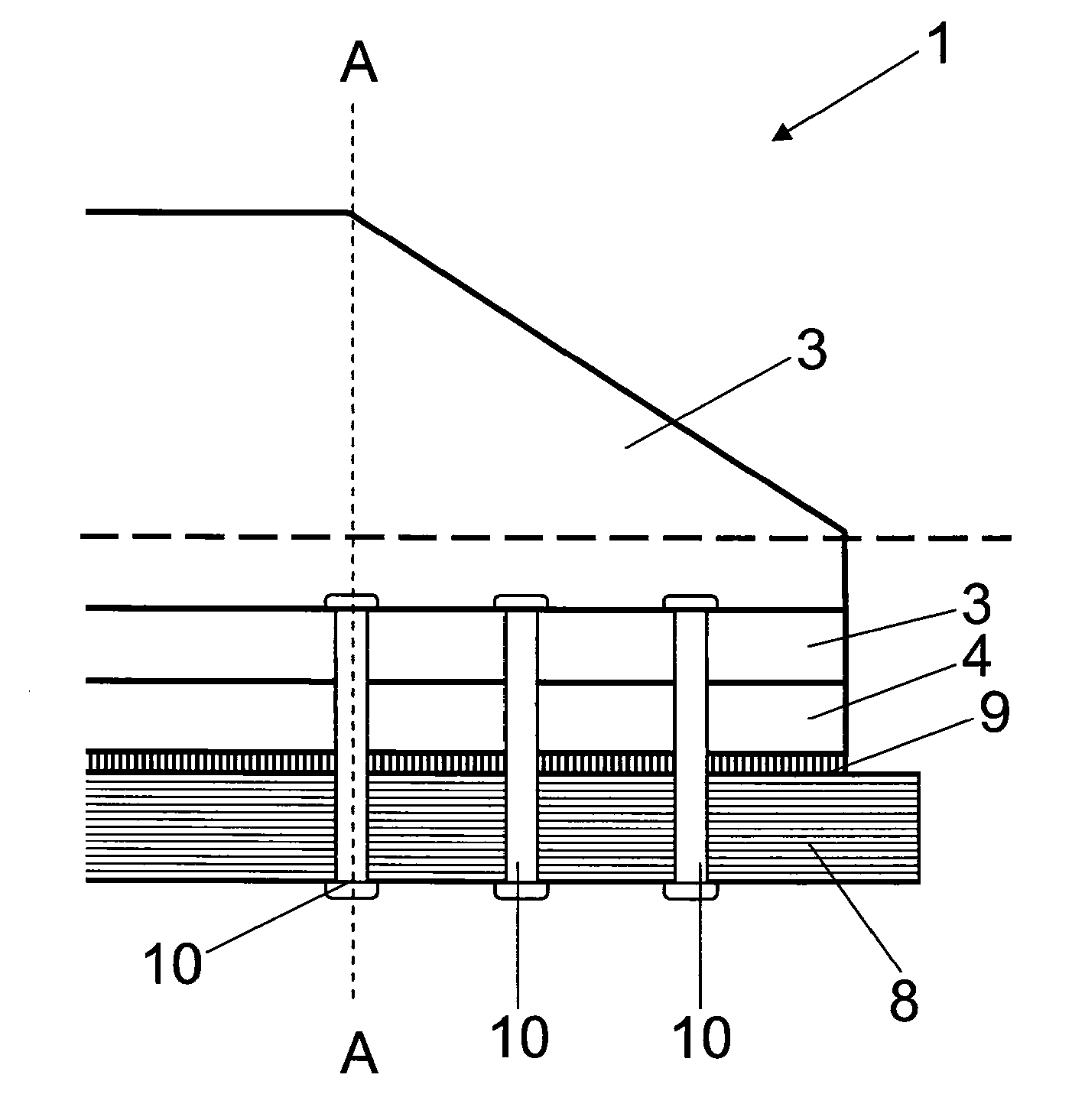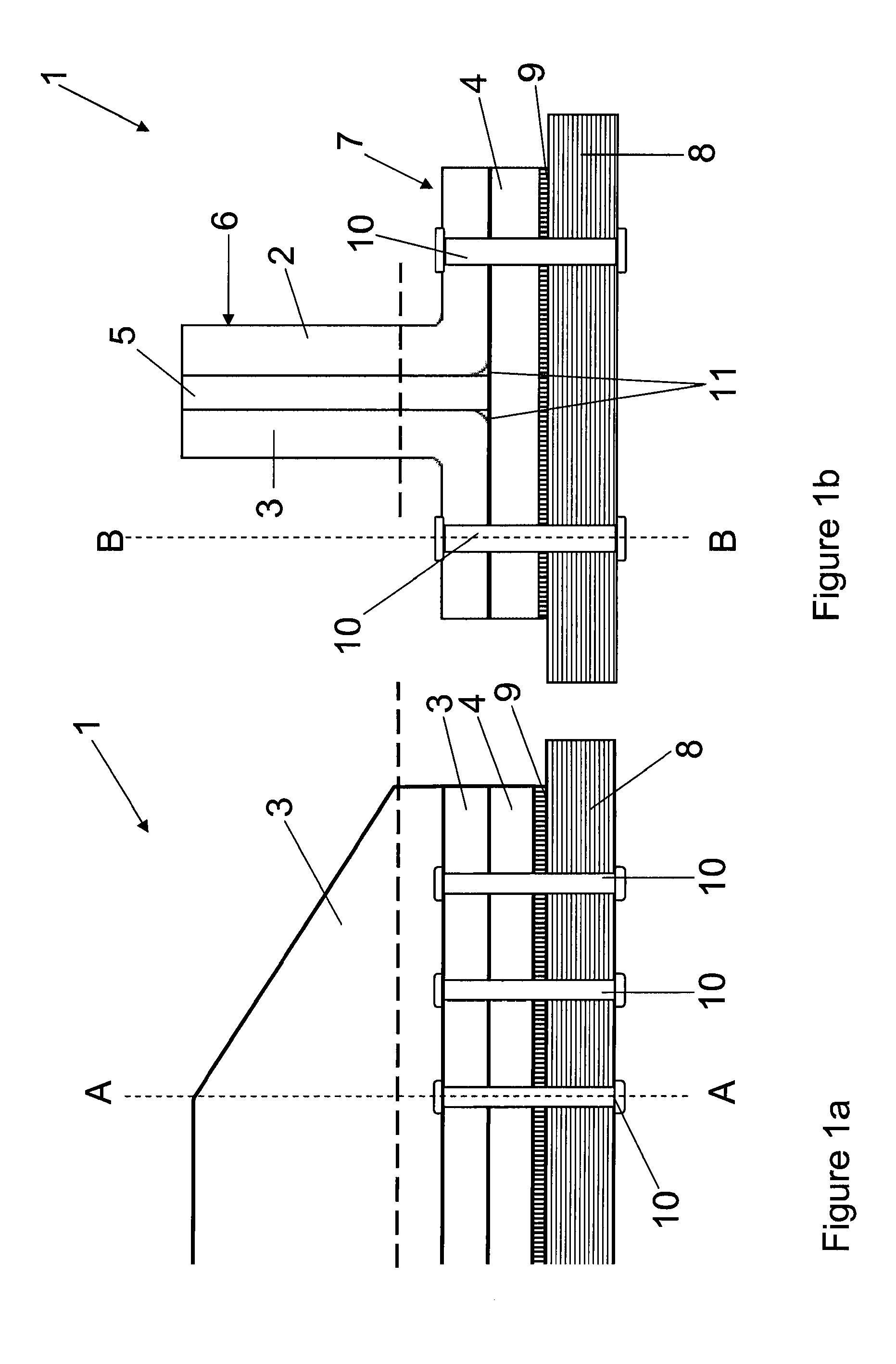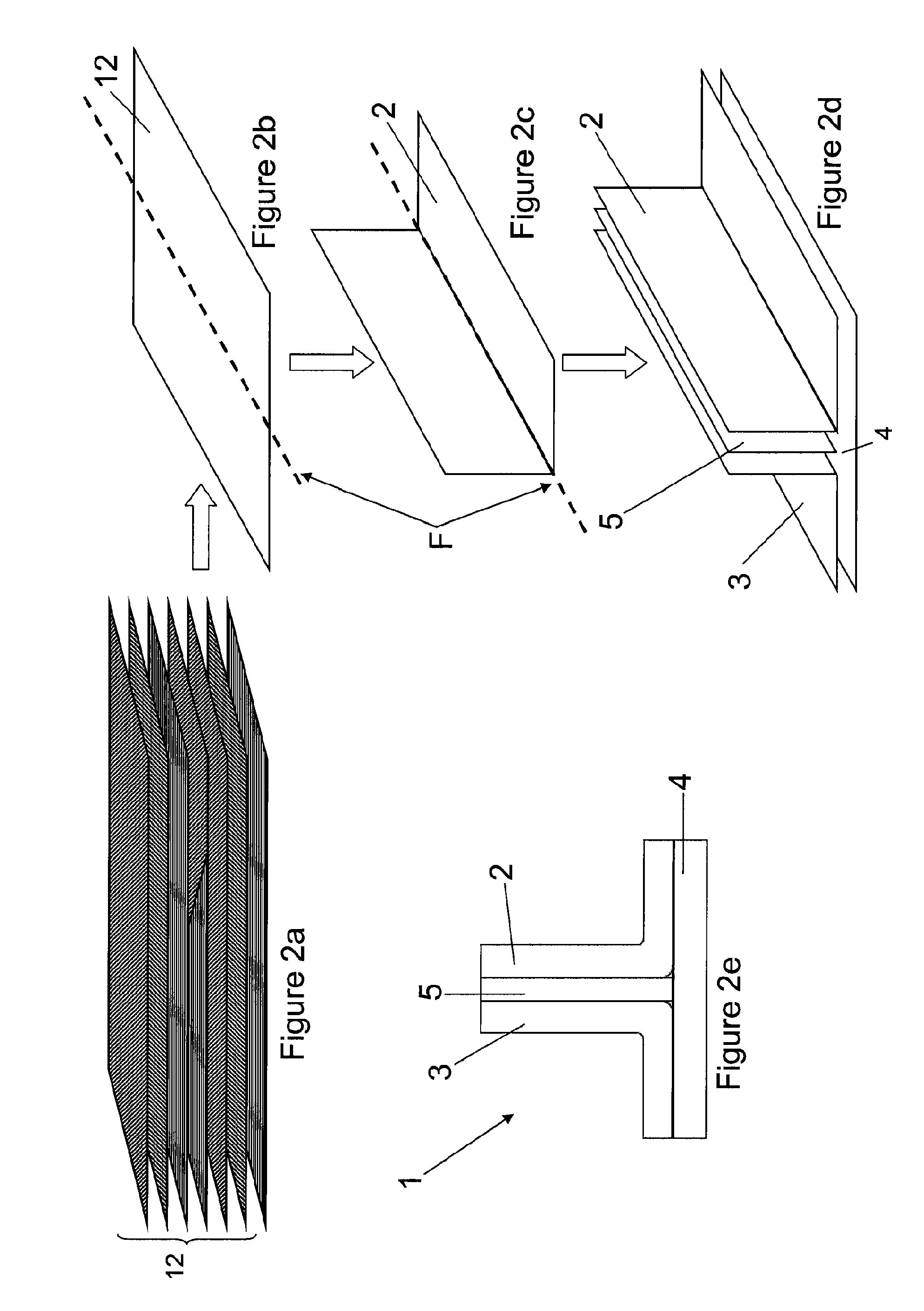Composite structural member
a composite structural and composite technology, applied in the direction of domestic objects, air transportation, vehicle components, etc., can solve the problems of poor compliance with the skin under bending, poor axial stiffness, and high rigidity of bonded joints, so as to achieve low axial stiffness, high rigidity, and low rigidity.
- Summary
- Abstract
- Description
- Claims
- Application Information
AI Technical Summary
Benefits of technology
Problems solved by technology
Method used
Image
Examples
Embodiment Construction
)
[0033]FIGS. 1a and 1b illustrate a “T” section composite stringer 1 comprising a pair of “L” section members 2, 3, a base stack 4 and a central stack 5. FIG. 1b illustrates the cross section view along A-A in FIG. 1a, and FIG. 1a illustrates the cross section view along B-B in FIG. 1b.
[0034]The stringer 1 is attached to a laminate composite panel 8 by a bonding line 9 and an array of fasteners 10 of conventional type. The bond line 9 and the fasteners 10 help to transfer load at the stringer termination into the panel 8. Each of the stringer components 2, 3, 4 and 5, comprise a laminate stack of composite structural plies, as will be described in greater detail below. Due to the limited bend radius of the “L” section components 2, and 3, noodles 11 are provided in the cleft between the back-to-back “L” sections 2, 3 and the central stack 5, as best seen in FIG. 1b. The noodles 11 comprise fibre filler material.
[0035]Although the stringer 1 shown in FIGS. 1a and 1b includes a base ...
PUM
| Property | Measurement | Unit |
|---|---|---|
| thickness | aaaaa | aaaaa |
| thickness | aaaaa | aaaaa |
| thick | aaaaa | aaaaa |
Abstract
Description
Claims
Application Information
 Login to View More
Login to View More - R&D
- Intellectual Property
- Life Sciences
- Materials
- Tech Scout
- Unparalleled Data Quality
- Higher Quality Content
- 60% Fewer Hallucinations
Browse by: Latest US Patents, China's latest patents, Technical Efficacy Thesaurus, Application Domain, Technology Topic, Popular Technical Reports.
© 2025 PatSnap. All rights reserved.Legal|Privacy policy|Modern Slavery Act Transparency Statement|Sitemap|About US| Contact US: help@patsnap.com



